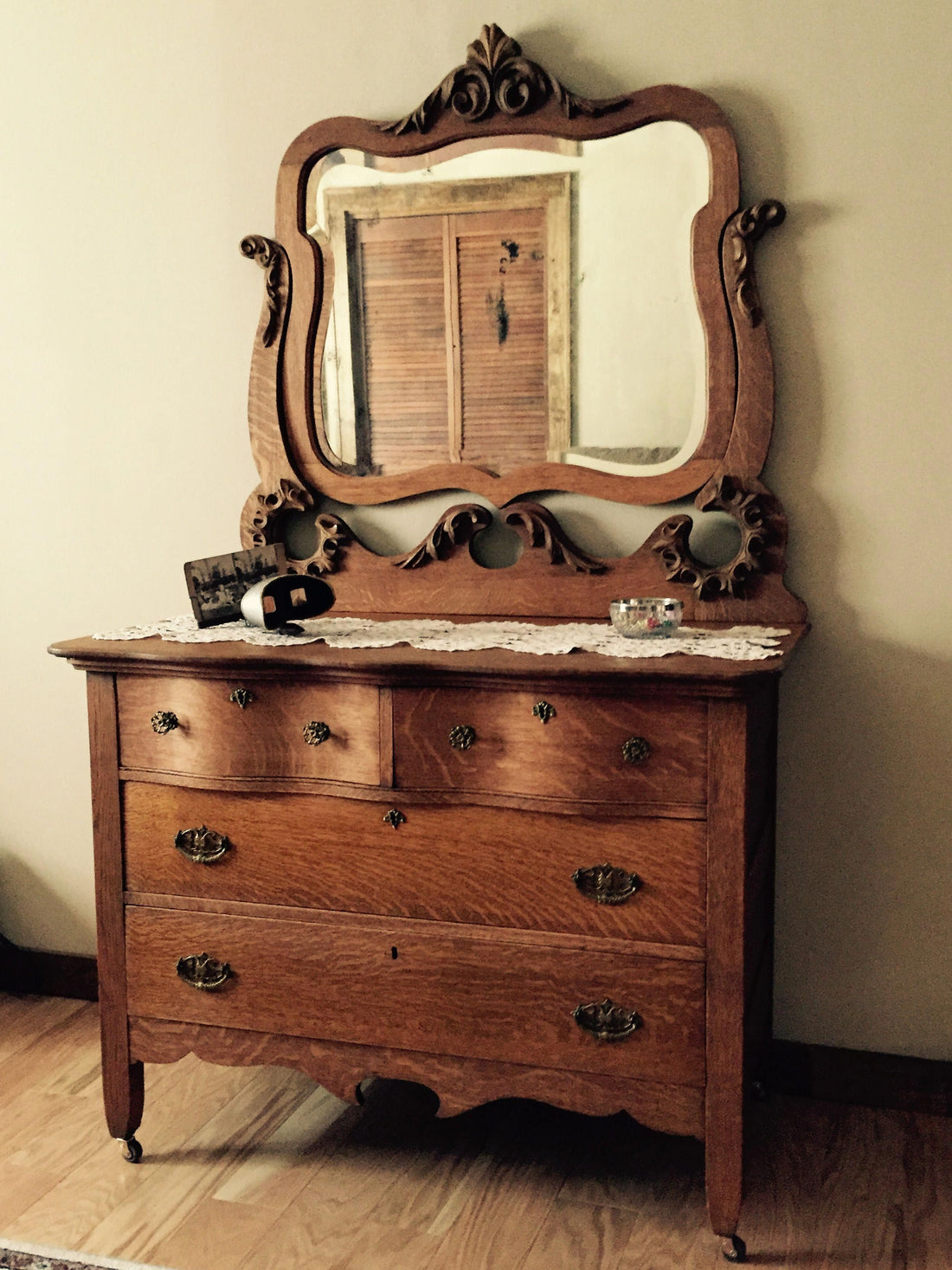
How well do you know your older dresser styles?
Share
Dressers have long been essential pieces of furniture, blending functionality with aesthetic appeal. Over the centuries, their styles have evolved, reflecting the changing tastes and craftsmanship of different eras. Let's embark on a journey through time and explore some notable styles of older dressers that have stood the test of time.
Victorian Dressers: Ornate Elegance
The Victorian era (1837-1901) is renowned for its opulence and intricate designs. Victorian dressers often feature elaborate carvings, floral motifs, and dark woods like mahogany and walnut. These dressers are typically adorned with large mirrors and decorative hardware, exuding a sense of grandeur and sophistication. The heavy ornamentation and robust construction reflect the era's emphasis on luxury and detail. Victorian dressers often incorporate elements of Gothic, Rococo, and Renaissance styles, making them highly ornate and visually stunning.
Art Deco Dressers: Sleek and Stylish
Emerging in the 1920s and 1930s, Art Deco dressers embody modernity and elegance. Characterized by clean lines, geometric patterns, and the use of exotic materials such as ebony, ivory, and chrome, these dressers often have a sleek, streamlined appearance. The use of inlaid wood veneers and bold, contrasting colors epitomizes the glamour and innovation of the Jazz Age. Art Deco dressers frequently feature motifs inspired by ancient cultures, such as Egyptian and Aztec designs, adding a unique and eclectic touch to their sleek forms.
Mid-Century Modern Dressers: Functional Simplicity The mid-20th century brought about a significant shift in design with the rise of Mid-Century Modern style. Dressers from this period, spanning the 1940s to the 1960s, are celebrated for their minimalist aesthetics and functionality. Constructed with simple lines, organic shapes, and materials like teak and walnut, these dressers often feature tapered legs and integrated handles. The focus is on practicality and understated beauty, reflecting the era's optimism and forward-thinking design philosophy. Mid-Century Modern dressers emphasize the harmony between form and function, making them timeless pieces that continue to influence contemporary design.
Antique French Dressers: Rustic Charm
French provincial dressers, popular from the late 17th century to the 19th century, combine elegance with rustic charm. These pieces often boast curved lines, cabriole legs, and intricate woodwork. Typically painted in pastel colors or left in natural wood tones, they feature delicate carvings and motifs like flowers and vines, capturing the essence of countryside sophistication. The distressed finishes and hand-painted details of French provincial dressers give them a charming, lived-in look that adds warmth and character to any space.
Colonial Dressers: Sturdy Simplicity
Colonial dressers, which emerged during the American colonial period (1600s-1700s), are known for their sturdy construction and simple, functional design. Made from locally available woods like pine, maple, and cherry, these dressers often feature straight lines and minimal ornamentation. The craftsmanship focuses on durability and practicality, reflecting the needs and values of early American settlers. Despite their simplicity, Colonial dressers often have elegant touches, such as turned legs and paneled doors, showcasing the skill of the craftsmen.
Chippendale Dressers: Classic Refinement
Named after the renowned 18th-century English cabinetmaker Thomas Chippendale, Chippendale dressers are synonymous with classic refinement. These pieces are characterized by their elegant proportions, intricate carvings, and use of high-quality woods like mahogany. Chippendale dressers often feature cabriole legs, ball-and-claw feet, and ornate hardware. The style incorporates elements of Gothic, Rococo, and Chinese design, resulting in a harmonious blend of sophistication and grandeur.
Each style of dresser offers a unique glimpse into the past, showcasing the craftsmanship and artistic trends of its time. Whether you're an antique enthusiast or a lover of vintage decor, these dressers add character and historical richness to any space. From the ornate elegance of Victorian dressers to the functional simplicity of Mid-Century Modern pieces, these dressers tell the story of evolving design and the enduring appeal of beautifully crafted furniture.
